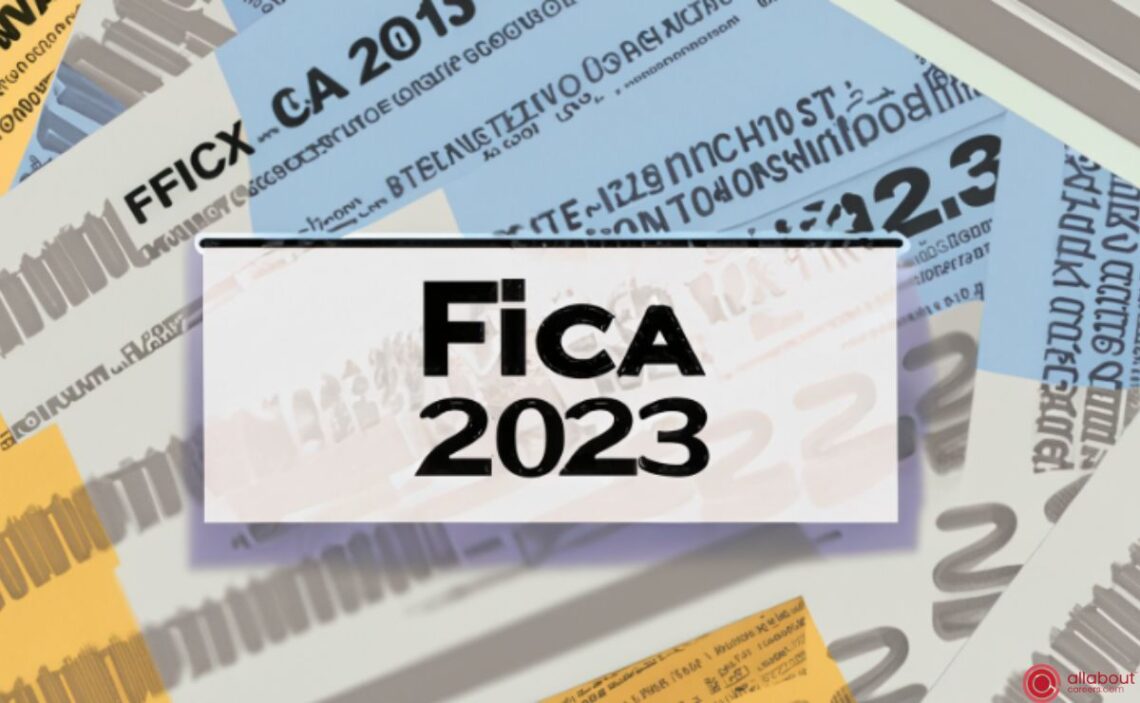When you receive your payroll, you’ve likely noticed several deductions that decrease your gross pay and affect the final amount deposited into your bank account. One of these deductions is identified as FICA-EE. This acronym can be enigmatic to many, particularly those new to the workplace or unfamiliar with the subtleties of payroll deductions.
Every employee needs to understand payroll deductions such as FICA-EE. This understanding lets you know where your hard-earned money is going and why specific amounts are deducted before you receive your take-home pay. This knowledge can also be helpful in more effectively planning your finances and preparing for future financial responsibilities.
What is FICA tax?
FICA tax stands for the “Federal Insurance Contributions Act” tax. This tax is divided into two parts: the Social Security tax and the Medicare tax—the Social Security tax funds retirement, disability, and survivor benefits for eligible individuals and their families. The Medicare tax helps finance the Medicare program, which provides healthcare coverage for individuals aged 65 and older and certain individuals with disabilities.
For employees, the FICA tax is automatically withheld from their wages or salary by their employer. The employer is also responsible for contributing an equal amount to the FICA tax on behalf of the employee.

Social Security and Medicare withholding rates 2024
The maximum amount of income subject to Social Security taxes is adjusted annually. For the 2024 tax year, this threshold is set at $137,700. In simple terms, if an employee earns more than this, only the first $137,700 of their income is subject to Social Security taxes.
When combining the Social Security and Medicare withholding rates, a total rate of 15.3% is applied uniformly to all wage earners. This figure is derived from the 12.4% Social Security and 2.9% Medicare tax rates.
Employers are responsible for withholding Additional Medicare Tax at a rate of 0.9% on an individual’s wages exceeding $200,000 in a calendar year, regardless of the individual’s filing status.
What is withholding tax?
Withholding tax is a mechanism used to ensure the timely collection of income taxes by deducting a portion of an individual’s income at the source before it is paid to them. It helps people to meet their tax obligations yearly and improves the tax system’s efficiency.
What is FICA EE and how does it work?
FICA EE stands for “Federal Insurance Contributions Act Employee-Employee.” This tax aims to fund the Social Security and Medicare programs, which are critical components of the American social safety net. As we said before, the Social Security program benefits retirees, people with disabilities, and children of deceased workers. On the other hand, Medicare is a health insurance program intended primarily for people over 65, although it also covers some younger people with specific disabilities.
The “EE” in FICA-EE refers to the worker’s share of the tax (Employee/Employer). This distinction is essential because employees and employers contribute to FICA taxes, but the amounts are recorded separately. The employer’s contribution is often referred to as FICA-ER.
When are FICA taxes due?
The FICA tax year is generally divided in quarters, with specific due dates of April 30th, July 31st, October 31st, and January 31st of the following year.
What is Fed Med/EE and how does it work?
The term “Fed Med/EE” stands for the Federal Medical Expense Employee/Employer (Fed Med/EE) program. This program offers federal employees a range of health insurance options from different insurance carriers. It allows employees to choose the most suitable plan for their needs.
In the Fed Med/EE program, the cost of health insurance coverage is divided between the employee and the employer. The “Med/EE” refers to the sharing of premium payments. The employee pays a portion of the premium, while the employer covers the remaining amount.
The Fed Med/EE program aims to provide comprehensive health insurance coverage to federal employees while sharing costs between them and their employers. It offers flexibility in plan selection and requires employees to contribute to premium payments based on their chosen coverage.
The Social Security Tax is broken down into Fed Med EE (which represents the Medicare portion) and Fed OASDI/EE (which represents the Old Age, Survivors, and Disability Insurance portion). As an employee, you contribute 1.45% of your paycheck to Fed MED/EE, while your employer also contributes an equal amount (total of 2,9%).
As explained before, FICA taxes include Social Security and Medicare taxes, typically amount to 15.3% of your earnings, with you being responsible for half of the total.
FAQs
What happens if an employer fails to present their FICA taxes on time?
If an employer fails to present the FICA taxes on time, they may face penalties, interests, and other sanctions. The penalties can increase significantly over time, while interests accrue on unpaid taxes. The IRS may also initiate audits or investigations into the employer’s tax compliance.
Do self-employed workers pay both the employee and employer’s portions of taxes?
No. Self-employed individuals are responsible for paying the employee’s portion of Social Security and Medicare taxes, but they do not have to pay the employer’s portion.
Can employers get a refund of overpaid FICA taxes?
Employers have the option to request a refund of overpaid FICA taxes. If an employer believes they have paid more in FICA taxes than they owe, they can file Form 941X, the Adjusted Employer’s Quarterly Federal Tax Return, or Claim for Refund.
References
- Napoletano, E. “What Is FICA Tax and How Does It Work? – Buy Side from WSJ.” The Wall Street Journal – Breaking News, Business, Financial & Economic News, World News and Video, Buy Side from WSJ, 22 Jan. 2024, https://www.wsj.com/buyside/personal-finance/what-is-fica-tax-01674395539.
- Parys, Sabrina, and Tina Orem. “How FICA Tax Works in 2022-2024 – NerdWallet.” NerdWallet, http://www.facebook.com/NerdWallet, 21 May 2019, https://www.nerdwallet.com/article/taxes/fica-tax-withholding.


